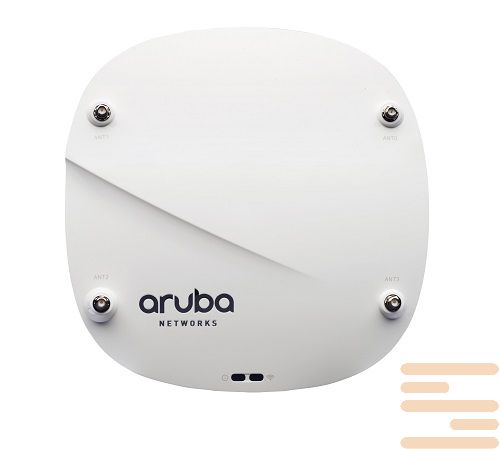Access point Aruba JW795A
1060 $
Access points Aruba (HPE) Provide fast and stable wireless data transmission in the corporate network.. Aruba offers both simple devices for providing basic Wi-Fi network functionality, and for networks with high user density and speeds up to 2 Gbit/s, as well as protected models for operation in difficult climatic conditions.
Access points are easy to install, can work simultaneously in the bands. 2,4 and 5 GHz, use technology MIMO to increase the data transfer rate and support the standard 802.11ac Wave2.
Instant-Access points Aruba — do not require a separate controller, but use a virtual controller, the functions of which are performed by one of the points. HPE Aruba Instant — is a solution that allows you to deploy «controllerless» enterprise WiFi network. It already has built-in network security, automatic management RF and enough smart features to run a complete solution without additional licensing. A cluster is controlled from access points using a virtual controller, which is placed on one of the access points. (IAP). The controller is responsible for the process of autoconfiguring new access points, authorization and authentication, guest access and network services (NAT, DHCP and etc.).
Specifications Access points Aruba (HPE) JW795A:
|
UNIQUE BENEFITS |
|
|
CHOOSE YOUR OPERATING MODE |
|
|
SPECIFICATIONS |
|
|
WI-FI RADIO SPECIFICATIONS |
|
|
WI-FI ANTENNAS |
|
|
OTHER INTERFACES |
|
|
POWER SOURCES AND CONSUMPTION |
|
|
MOUNTING |
|
|
MECHANICAL |
|
|
ENVIRONMENTAL |
|
|
REGULATORY |
For more country-specific regulatory information and approvals, please see your Aruba representative. |
|
RELIABILITY |
|
MTBF: 916,373hrs (105yrs) at +25C operating temperature |
|
REGULATORY MODEL NUMBERS |
|
|
CERTIFICATIONS |
|
|
WARRANTY |
|
Aruba limited lifetime warranty |
|
MINIMUM SOFTWARE VERSIONS |
|
| condition | new |
|---|

Log In